About Falcons
4 Habitat
Lauren Weiss
Location
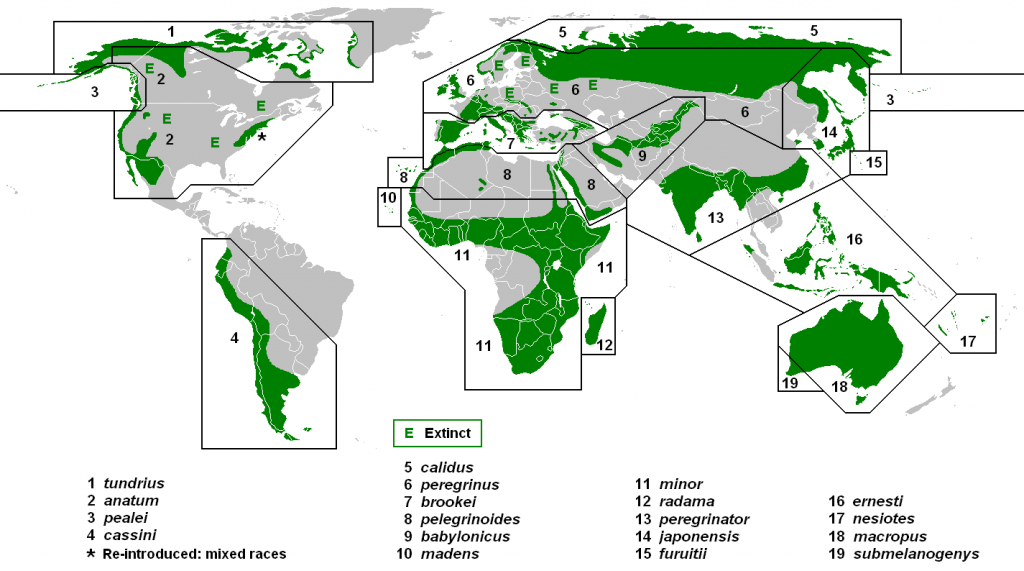
Peregrine falcons are found on every continent except Antarctica.
Subspecies
There are 19 known subspecies of peregrine falcons:
- Anatum
- Babylonicus
- Brookei
- Calidus
- Cassini
- Ernesti
- Furuitii
- Japonensis
- Macropus
- Madens
- Minor
- Nesiotes
- Pealei
- Pelegrinoides
- Peregrinator
- Peregrinus
- Radama
- Submelanogenys
- Tundrius
For more information on these subspecies, please see the “Peregrine Falcon Subspecies” section.
Nest
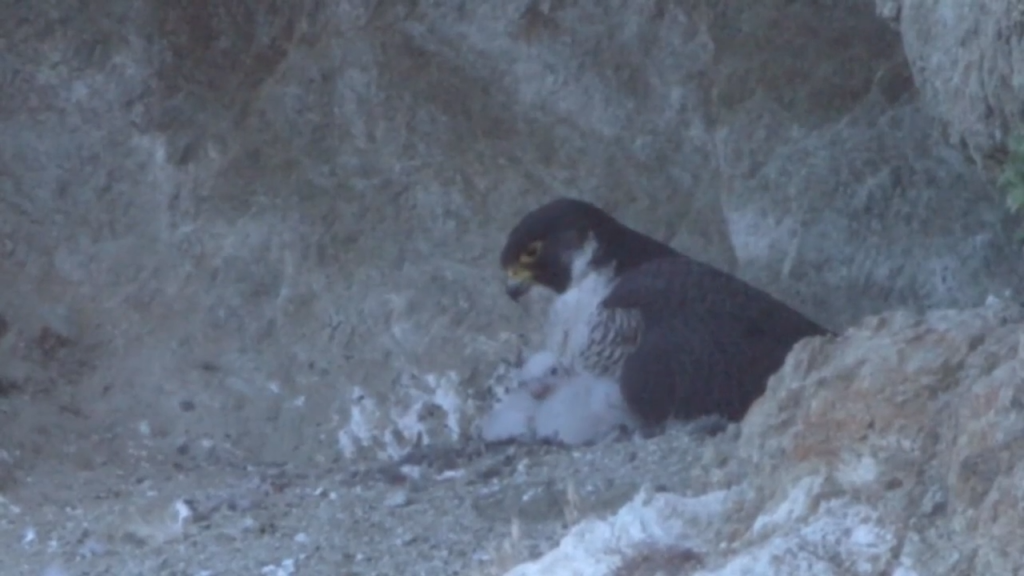
A peregrine falcon’s nest site is called an eyrie (EYE-ree).
A peregrine falcon’s nest is called a scrape. This is because in the wild, peregrines nest on cliff ledges. Unlike other raptors, they don’t bring any materials to build nests; instead, they find a cliff site with accumulated soil or gravel and scrape out a shallow depression in which to lay their eggs. They may also use unused raven or red-tailed hawk nests.
In urban areas, where there aren’t any cliff ledges, peregrine falcons nest on tall man-made structures, such as tall buildings and bridges. Since there is no natural accumulation of soil or gravel on man-made structures that they can scrape out, they will sometimes lay eggs on unused Rock pigeon nests and accumulated droppings, or even on bare steel, although those nests often fail. In many places, wildlife experts put out nest boxes or trays with a few inches of pea gravel for urban falcons to use, which allows them to nest safely. Examples of nest boxes can be found on both the UMass Amherst Libraries and the UC Berkeley Campanile.
Territory
A peregrine falcon’s territory is a large area around the nest site. It’s like having a very large yard around a house. The size of a falcon’s territory can vary, but has to have at least a 1.4 mile radius. The female peregrine falcon chooses the location of the nest site from several options in the territory shown to her by the male.
Falcons tend to nest in the same spot every year, but will occupy alternate nest sites within their territory during some years. For example, the falcons at UMass Amherst usually use the nest box on top of the W. E. B. Du Bois Library, but nested in an old, unused box on nearby Thompson Hall in 2022 while the Du Bois box was being renovated.
Falcons that don’t have their own territories or mates are called floaters. They may be looking for breeding territories, and so they may stay in and around other falcons’ territories until they are driven off by the breeding falcons. Now that the falcon population has made a comeback, there are many more falcons looking for territories, which means there are more altercations between a falcon pair defending their nest and floaters trying to take over the territories and win a mate. Most often, males will fight males and females will fight females.
Aside from floaters, peregrine falcons must also defend their nests and territories from predators. Gyrfalcons, eagles, and great horned owls are all predators of peregrine falcons.
Migration
Many peregrine falcons migrate (seasonally move from one location to another), especially those that live farther north. Falcons that live farther north typically have the longest migrations, while those more south don’t migrate as far. For example, peregrine falcons in high latitudes (Greenland, Labrador) migrate every winter as far south as South America. North American peregrines may or may not migrate; many urban peregrines do not need to migrate, since they have plentiful sources of prey year-round.
Local Information: Massachusetts
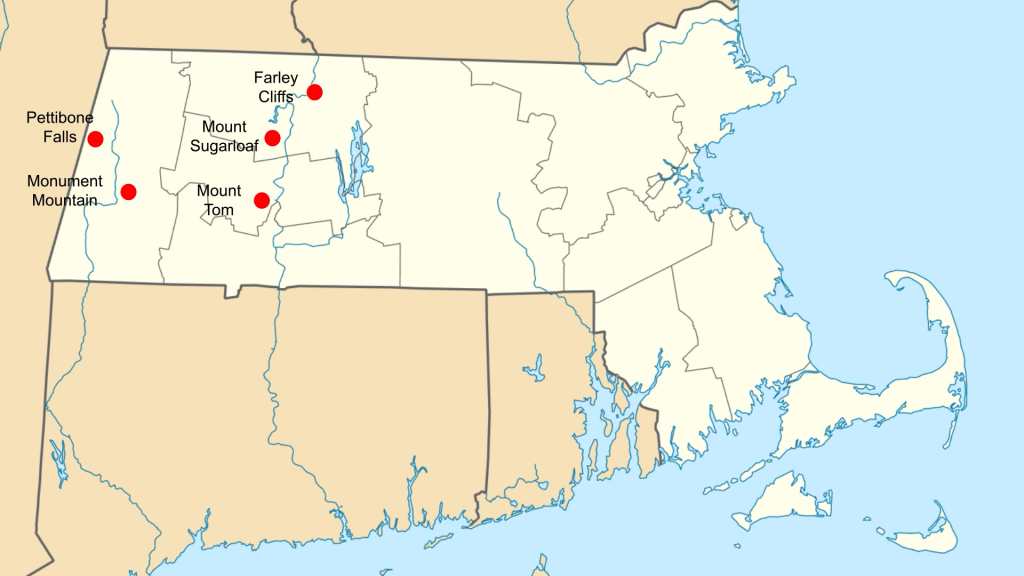
In Massachusetts, there are 14 cliff nest sites historically used by peregrine falcons. Of those 14, 5 are still in use: Mount Tom, Mount Sugarloaf, Farley Cliffs, Monument Mountain, and Pettibone Falls.
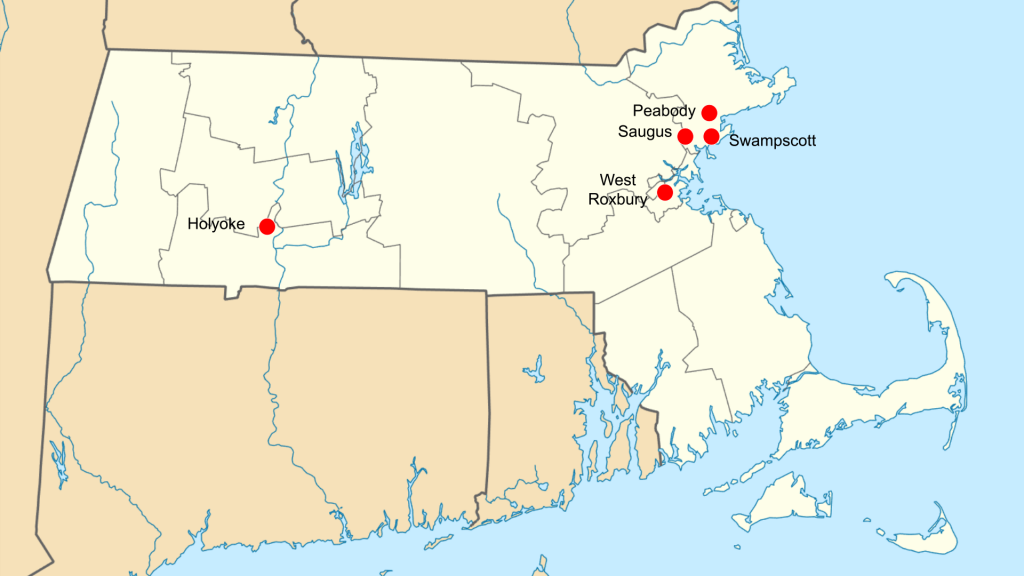
They have also been seen nesting on the cliffs of quarries in Holyoke, West Roxbury, Saugus, Peabody, and Swampscott.
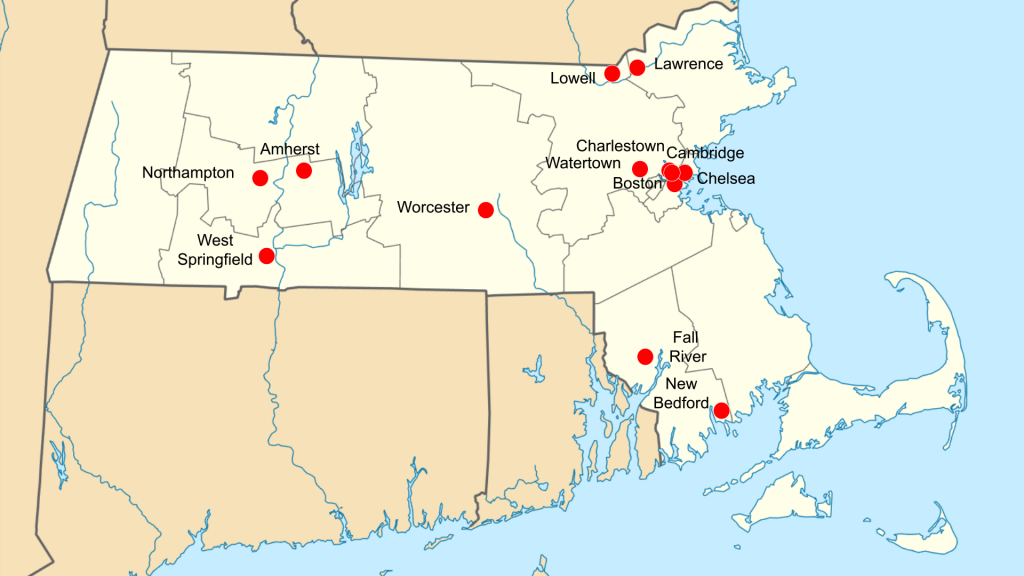
In urban areas of Massachusetts, falcons nest on buildings in Boston, Chelsea, Cambridge, Watertown, Lawrence, Lowell, Worcester, Amherst, and New Bedford, as well as bridges in Charlestown, Fall River, West Springfield, and Northampton.
Most young falcons disperse to other areas of Massachusetts during their first fall/winter, particularly along the coast, where there are plenty of shorebirds. Others disperse around the other Northeastern states, where they will eventually nest. A very small number will migrate as far south as Florida, but return to the Northeast in spring and never migrate south again.
Media Attributions
- Peregrine Subspecies Map © MPF is licensed under a CC BY-SA (Attribution ShareAlike) license
- Scrape © D. Bruce Yolton is licensed under a CC BY (Attribution) license
- Western Mass Falcon Nest Sites © Map by Alexrk2; locations by Lauren Weiss is licensed under a CC BY (Attribution) license
- Falcon Nests on Cliffs of Quarries © Map by Alexrk2; locations by Lauren Weiss is licensed under a CC BY (Attribution) license
- Falcon Nests Massachusetts © Map by Alexrk2; locations by Lauren Weiss is licensed under a CC BY (Attribution) license

